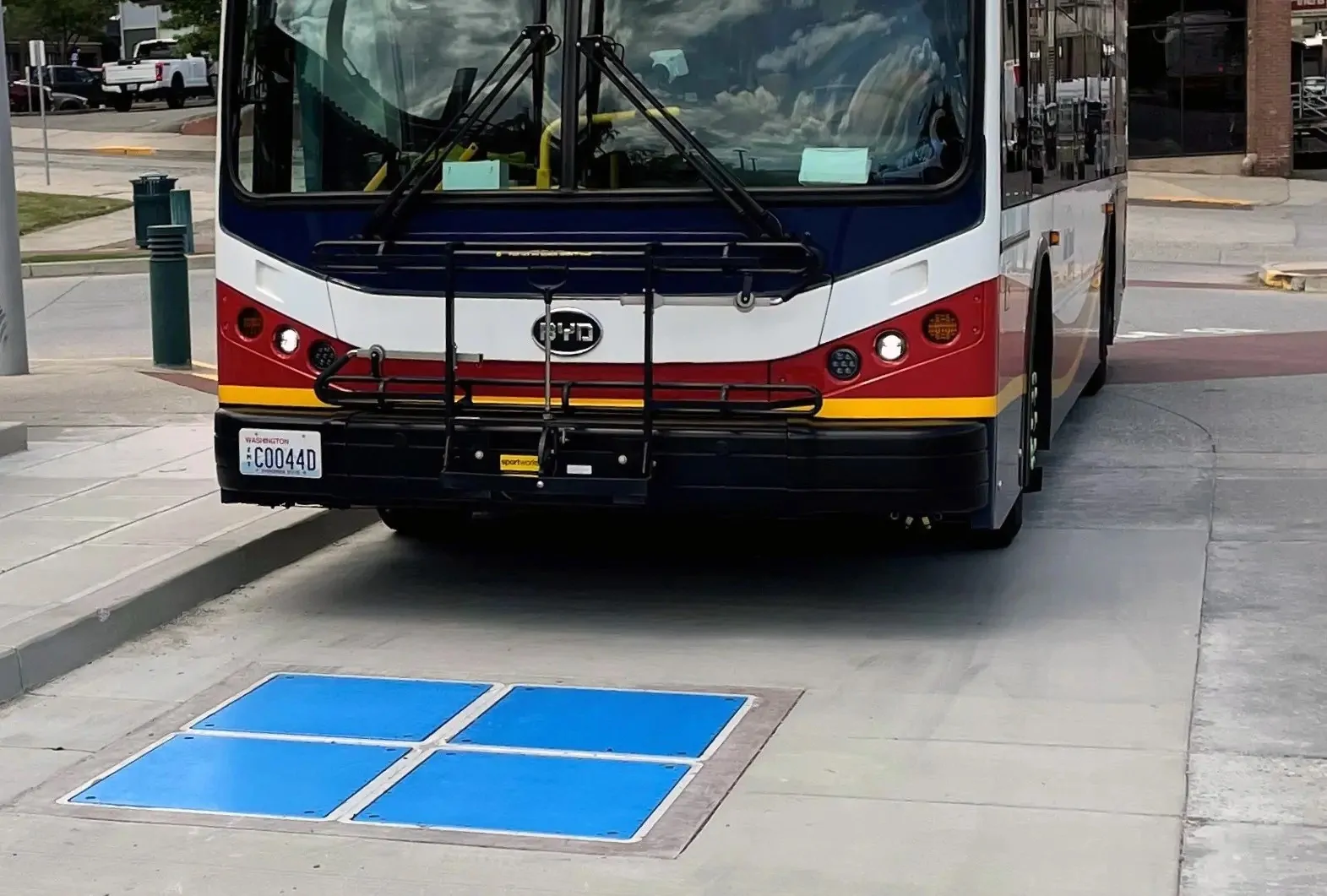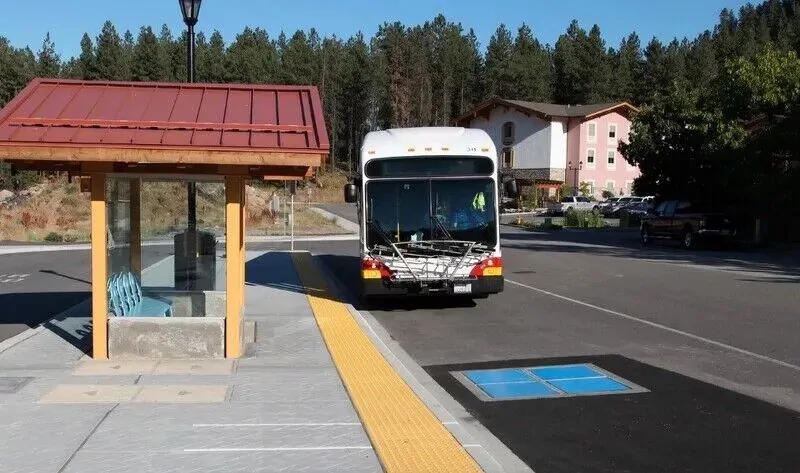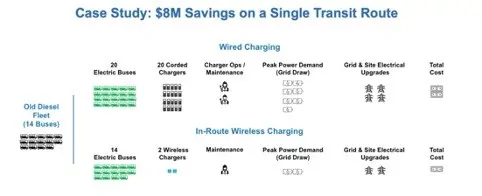See Full Size
Electrification of buses is one of the most difficult issues because, on the one hand, they need to carry huge loads, and on the other hand, they need to carry passengers for long periods of time, such as 18 hours. Since there is no battery technology yet to meet this, you will either increase the number of buses or charge them frequently during the day. Since it does not make sense to increase the number of electric buses, which already cost 1 million dollars, the best solution is to charge them wirelessly on the route. InductEV, a public transportation company in the USA, has launched a wireless charging system for electric buses. Buses are charged at speeds of up to 450 kW while waiting at the bus stop.
How does the system work?
The wireless charging system prepared for buses consists of 4 different units. The first one, like everywhere else, is the cabin where the electronics and electrical power of a charging station are prepared. The second is the charging pads integrated into the asphalt on the road, each capable of delivering 75 kW, with a maximum of 6 reaching a power of 450 kW. The third is the receiver charging pads that are integrated under the vehicle and convert the magnetic field into electricity, and finally the in-car display that allows the driver to align the bus. You may think that wireless charging causes a lot of losses, but with recent developments, over 90% efficiency can be achieved in all weather conditions.
InductEVhas integrated this system into hundreds of state-owned public transportation buses in the United States. Moreover, these buses belong to many different manufacturers. InductEV modifies the electric buses that the city prefers to use and makes them wirelessly chargeable, places charging pads in appropriate places on the route and provides training to the drivers. It ensures that the buses leave the garage with a full charge and return to the garage with a near-full charge at the end of the day.
Thanks to the wireless charging surfaces installed not far from each other, buses do not have to use a huge, heavy and extremely costly battery. Battery life is preserved as the battery charge is kept between 40% and 80%. Apart from this, there is no need to install a huge electrical infrastructure in the garage where dozens of buses will be charged.
Lower cost compared to wired charging
InductEV beautifully summarizes the benefits of the system in a study it conducted. To charge a line operated with a total of 14 diesels with a wired charging station, a total of 20 buses, 20 charging stations, 2 charging and maintenance personnel, a serious need for instant power from the grid and the costs of upgrading the grid are needed. For the wireless charging system, 14 buses, 2 wireless charging stations, 1 maintenance personnel, low instantaneous power requirement and little network reinforcement are sufficient. With wireless charging 8 million dollars It provides savings.
Of course, wireless charging technology is not only used in buses. It is used in all vehicles in railways, ports and airports, as well as minibuses and taxis. With the logic of charging whenever possible, these vehicles avoid having to constantly plug and unplug cables or go back and forth to charge.
Founded 11 years ago, InductEV launched its first commercial product in 2017 and was listed as one of Time magazine’s 200 most important innovations this year. This technology, which is in the sustainability category; It was listed among the most important inventions of the year based on the originality of the idea, its effectiveness, passion and the impact it created.
This news our mobile application Download using
You can read it whenever you want (even offline):





